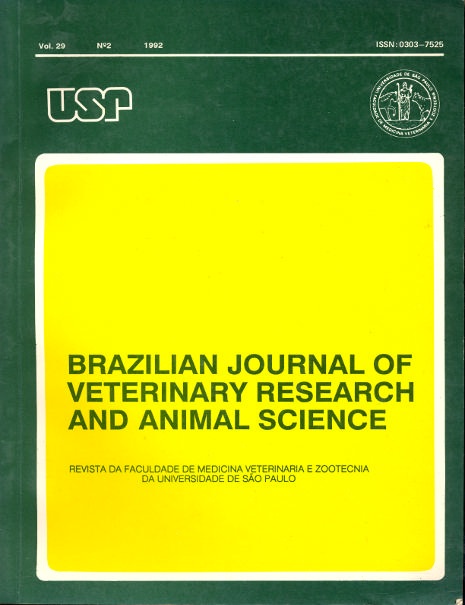Prevalence of the nematode Trichosomoides crassicauda in a conventional Wistar rats colony
DOI:
https://doi.org/10.11606/issn.1678-4456.bjvras.1992.51985Keywords:
Nippostrongylus, Nematoda (rats), Urinary calculi, RatsAbstract
In this study the prevalence of the nematode Trichosomoides crassicauda in the conventional rats colony of the Central Animal House (DTAEP) at the Faculdade de Medicina-USP was determined. Three hundred and sixty-five rats were submitted to post mortem examination: 130 males and 133 females 8 to 19 weeks old; and 102 retired breeders (51 males and 51 females) over 20 weeks of age. The prevalence of urinary calculi, which have been associated with T. crassicauda infestation, was also determined. The results obtained showed that the overall prevalence of T. crassicauda in the colony was 48% (43% in males and 53% in females) and the maximum value was observed for male rats over 16 weeks of age (80%). The maximum average number of worms found per rat was 2.5, in 16 weeks old female rats. There was no significant difference in the prevalence of calculi between infected and uninfected rats (10% and 16%, respectively), but the difference was found to be significant between males and females (23% and 4%). Furthermore, the calculi found in males (mucoid) were quite different from those found in females (crystals).
Downloads
Downloads
Published
Issue
Section
License
The journal content is authorized under the Creative Commons BY-NC-SA license (summary of the license: https://





